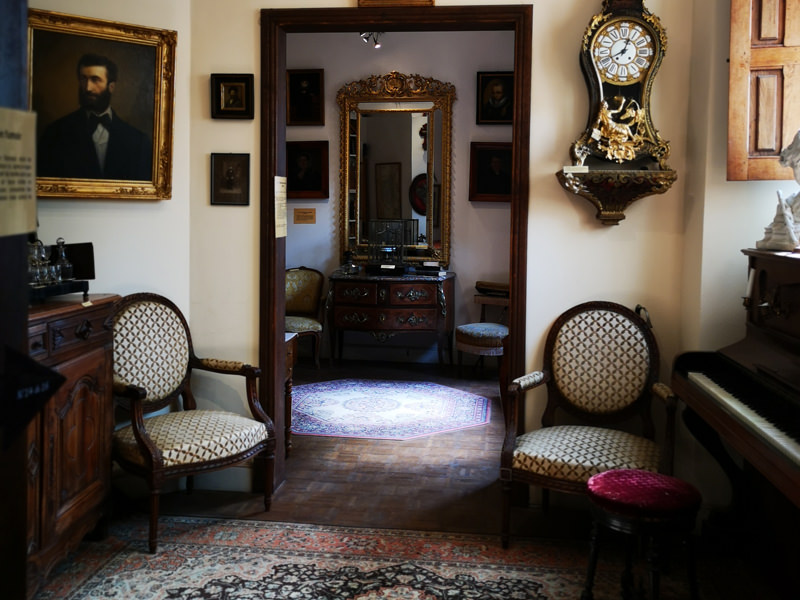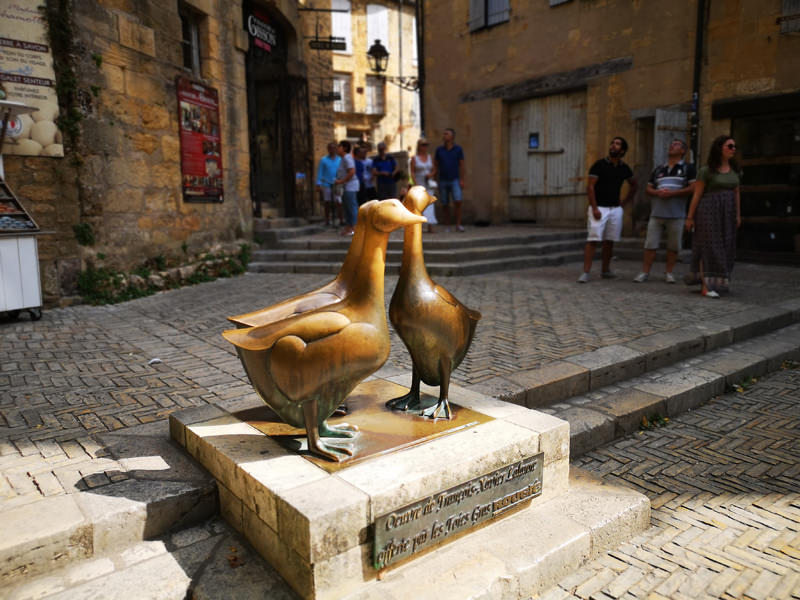
Sarlat-la-Canéda
City Tours
Our host in Sarlat : Katia Veyret of
Sarlat Tourisme
Produced by :  © 2021
© 2021


Our host in Sarlat : Katia Veyret of
Sarlat Tourisme
Produced by :  © 2021
© 2021
Sarlat-la-Canéda is the most famous town of the region, located in the Périgord Noir and is one of the most famous and visited places in France. It is also one of the most attractive. - At almost any time of the year it is full of tourists, because in and with the great restored buildings you breathe history and present of the city, which is located just a few kilometers north of the river Dordogne. The old town, whose buildings were built during both the Middle Ages and the Renaissance, simply must be viewed at leisure. The best time of year or day to do this is spring and fall or early in the morning. If you can catch the early morning sun on the sandstone buildings it is optimal.
If you don't want to set off unrestrained by any knowledge for a walk through Sarlat, the tourist office in the middle of the old town near the cathedral is the first place to go. Here you will find suggestions for a tour of the most important sights and also some more detailed information.
Here is my brief guide - especially for the RV community.

Driving into the city with a camper is not possible. But there is a spacious parking lot especially for this vehicle category. The old town is within walking distance from there, so quite a comfortable starting position.
Camper from the caravan group, so those like us, can find parking in the city with the car. On market days, it is also rather difficult here, but in the surrounding area are also available outside the city center parking facilities, within walking distance from the old town. One can also overcome and stand between the mobile homes...
In any case, we have seen the monument to the Fois Gras geese, visited an old mansion - the Manoir de Gisson - which is now mostly a museum and shows how the bourgoisie used to live here - and where the current owners of the house even still live.

The turbulent history of the city has clearly left its mark: Thick walls as protection during the 100-year war; the Dordogne was the front line between the French and the English. A church where today there is a weekly market. - A consequence a wrong decision during the French Revolution, when the town was loyal to the crown and as a result lost all privileges to Périgueux and Bergerac. The church was also closed and the building was converted into a gunpowder factory.
Now that the pandemic is losing its horror and the restrictions are becoming more manageable, a visit to Sarlat is really recommended, even if culture and history are not necessarily at the center of one's interests.